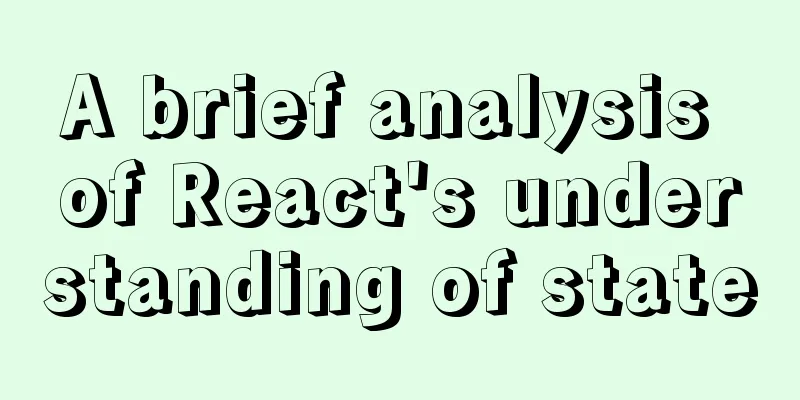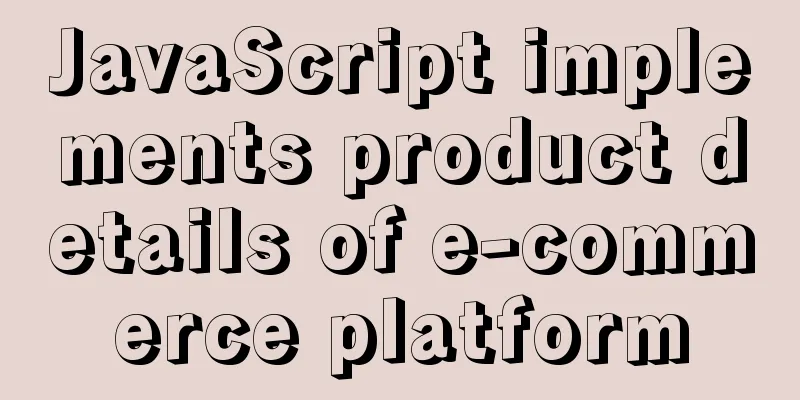Detailed explanation of the principle of Docker image layering

|
Base image The base image has two meanings:
Therefore, base images are generally Docker images of various Linux distributions, such as Ubuntu, Debian or CentOS. The base image provides the Linux distribution with the minimum installation. Most of our images will be built based on the base image. Therefore, the officially released base image is usually used. It can be found in Docker Hub. For example, centos: https://hub.docker.com/_/centos We can build a docker base image ourselves, or we can directly use an existing base image. For example, centos. We can pull it directly from docker hub. docker pull centos Check docker images centos REPOSITORY TAG IMAGE ID CREATED SIZE centos latest 1e1148e4cc2c 2 months ago 202MB You can see that the latest centos image is only 200mb. Do you think it is too small? This is because the Docker image directly uses the kernel of the Docker host machine when it runs. The Linux operating system consists of user space and kernel space. The kernel space is kernel, and the user space is rootfs. The difference between different distributions is mainly rootfs. For example, Ubuntu 14.04 uses upstart to manage services and apt to manage software packages, while CentOS 7 uses systemd and yum. These are differences in user space, and the kernel does not differ much. Therefore, Docker can support multiple Linux images at the same time and simulate different operating system environments. The base image only has the same user space and release version, and the kernel space uses the kernel of the Docker host machine. Storage Structure The above shows how to download a base image. We usually build our own image based on this base image. For example, add an nginx load balancing in centos. First of all, you need to understand what the structure of the image is. Official documentation: https://docs.docker.com/storage/storagedriver/ Docker image layer structure When you start an image, a new writable layer is loaded on top of the image. This layer is usually called the "container layer", below which is the "image layer". The container layer can be read and written, and all file changes and writes in the container occur at this layer. The image layer only allows reading, read-only. Copy-on-write Docker uses a modification-time copy strategy to ensure the security of the base image, as well as higher performance and space utilization.
Start from the top image layer and search downwards. After finding it, read it into the memory. If it is already in the memory, you can use it directly. In other words, Docker containers running on the same machine share the same files at runtime.
Search from top to bottom, and copy it to the container layer after finding it. For the container, you can see the file in the container layer, but not the file in the image layer. Then you can directly modify the file in the container layer.
Search from top to bottom, and record the deletion in the container after finding it. This is not a real deletion, but a soft deletion. This causes the image size to only increase, not decrease. When the container needs to add files, it is added directly to the top-level container writable layer without affecting the image layer. Streamlining and optimization of images Optimizing the base image When selecting a base image, choose a suitable smaller image. Commonly used Linux system images include Ubuntu, CentOs, Alpine, etc. Chaining Dockerfile instructions In a Dockerfile, each instruction creates an image layer, which increases the size of the image. Modifications to the current layer will not affect the previous layer.
Specific examples are as follows: Custom Dockerfile: FROM ubuntu:14.04 #Basic source image MAINTAINER xiongkun #Describe the creator of the image, name and email WORKDIR /home RUN dd if=/dev/zero of=50M.file bs=1M count=50 #Create a test file of size 50M RUN rm -rf 50M.file #Delete the file Optimized Dockerfile: FROM ubuntu:14.04 #Basic source image MAINTAINER xiongkun #Describe the creator of the image, name and email WORKDIR /home RUN dd if=/dev/zero of=50M.file bs=1M count=50 && rm -rf 50M.file #Create a file and delete it at the same layer The above is the full content of this article. I hope it will be helpful for everyone’s study. I also hope that everyone will support 123WORDPRESS.COM. You may also be interested in:
|
<<: Detailed examples of variable and function promotion in JavaScript
>>: Learn SQL query execution order from scratch
Recommend
Application of Beautiful Style Sheets in XHTML+CSS Web Page Creation
This is an article written a long time ago. Now it...
Detailed explanation of iframe tag usage (attributes, transparency, adaptive height)
1. iframe definition and usage The iframe element...
Vue implements anchor positioning function
This article example shares the specific code of ...
Alibaba Cloud domain name and IP binding steps and methods
1 Enter the Alibaba Cloud console, find the domai...
Solve the problem of mysql's int primary key self-increment
Introduction When we use the MySQL database, we a...
Detailed Explanation of JavaScript Framework Design Patterns
Table of contents mvc mvp mvvm The source of Vue ...
CSS3 realizes particle animation effect when matching kings
When coding, you will find that many things have ...
28 Famous Blog Redesign Examples
1. WebDesignerWall 2. Veerle's Blog 3. Tutori...
Detailed explanation of Vue custom instructions
Table of contents Vue custom directive Custom dir...
Details of MutationObServer monitoring DOM elements in JavaScript
1. Basic Use It can be instantiated through the M...
Several ways to remove the dotted box that appears when clicking a link
Here are a few ways to remove it: Add the link dir...
20 JavaScript tips to help you improve development efficiency
Table of contents 1. Declare and initialize array...
How to install Windows Server 2008 R2 on Dell R720 server
Note: All pictures in this article are collected ...
Detailed explanation of how to use the vue3 Teleport instant movement function
The use of vue3 Teleport instant movement functio...
Introduction to the use of the four major sql ranking functions ROW_NUMBER, RANK, DENSE_RANK, NTILE
1. ROW_NUMBER() Definition: The ROW_NUMBER() func...










